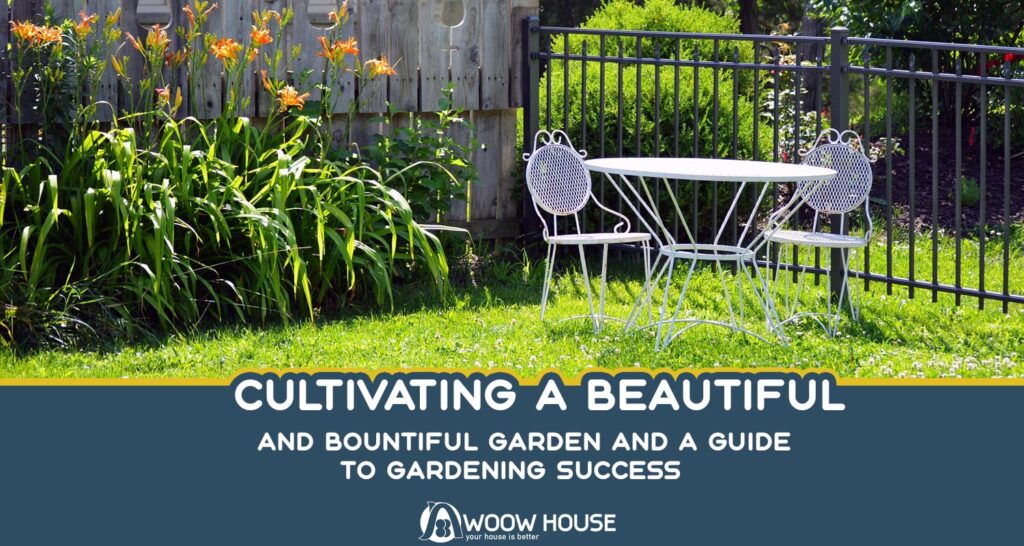Gardening is a timeless and rewarding pursuit that allows individuals to connect with nature, beautify their surroundings, and enjoy the fruits of their labor. Whether you’re a seasoned gardener or a novice enthusiast, cultivating a beautiful and bountiful garden requires careful planning, dedication, and a love for the process. In this comprehensive essay, we’ll explore essential techniques, tips, and practices for creating and maintaining a thriving garden that delights the senses and nourishes the soul.
Choose the Right Location
The success of your garden begins with selecting the right location. Consider factors such as sunlight exposure, soil quality, and proximity to water sources when choosing a site for your garden. Most vegetables, fruits, and flowering plants require at least 6-8 hours of sunlight per day, so choose a location that receives adequate sunlight throughout the day. Additionally, ensure that the soil is well-drained and fertile, with good air circulation and access to water for irrigation.
Plan Your Garden Layout
Before planting, take the time to plan your garden layout carefully. Consider factors such as plant spacing, companion planting, and crop rotation when designing your garden beds. Group plants with similar light, water, and soil requirements together to optimize growing conditions and minimize competition. Leave ample space between rows and plants to allow for air circulation, weed control, and ease of maintenance.
Prepare the Soil
Healthy soil is the foundation of a successful garden. Begin by testing the pH and nutrient levels of your soil to determine its fertility and composition. Amend the soil as needed with organic matter such as compost, aged manure, or organic fertilizers to improve soil structure, fertility, and drainage. Work the soil thoroughly to loosen compacted areas and remove rocks, roots, and debris that may inhibit root growth.
Choose the Right Plants
Selecting the right plants for your garden is essential for achieving success. Choose plants that are well-suited to your climate, soil type, and growing conditions. Consider factors such as plant size, growth habit, and maintenance requirements when choosing varieties for your garden. Opt for disease-resistant and pest-resistant cultivars whenever possible to minimize problems and maximize yields.
Provide Adequate Water
Water is essential for plant growth and development, so it’s important to provide adequate irrigation to your garden. Monitor soil moisture levels regularly and water plants deeply and evenly to encourage healthy root growth. Use drip irrigation, soaker hoses, or watering cans to deliver water directly to the root zone and minimize water waste. Water plants early in the morning to reduce evaporation and prevent fungal diseases.
Practice Good Garden Maintenance
Regular maintenance is key to keeping your garden healthy and productive throughout the growing season. Stay on top of tasks such as weeding, mulching, and pruning to keep plants thriving and minimize competition for resources. Remove weeds promptly to prevent them from competing with your plants for water, nutrients, and sunlight. Apply a layer of organic mulch such as straw, wood chips, or compost to suppress weeds, retain moisture, and regulate soil temperature.
Control Pests and Diseases
Pests and diseases can wreak havoc on your garden if left unchecked, so it’s important to implement proactive pest and disease management strategies. Monitor plants regularly for signs of pests or disease, such as yellowing leaves, holes in foliage, or wilting plants. Use physical barriers such as row covers or netting to protect plants from pests, and handpick pests such as aphids, caterpillars, or beetles when necessary. Practice crop rotation, companion planting, and good sanitation practices to reduce the risk of pest and disease outbreaks.
Harvest and Enjoy
One of the most rewarding aspects of gardening is harvesting and enjoying the fruits of your labor. Harvest fruits and vegetables when they are ripe and at their peak of flavor and freshness. Use sharp pruners or scissors to harvest produce such as tomatoes, peppers, and cucumbers to avoid damaging plants. Store harvested fruits and vegetables properly to prolong freshness and flavor, and share your bounty with friends, family, and neighbors to spread the joy of gardening.
Extend the Growing Season
Extend the growing season and maximize yields by implementing season-extending techniques such as using cold frames, row covers, or hoop houses. These structures provide protection from frost, wind, and inclement weather, allowing you to start planting earlier in the spring and continue harvesting later into the fall. Experiment with heat-loving crops such as tomatoes, peppers, and eggplants, and consider growing cool-season crops such as lettuce, spinach, and kale for a longer harvest window.
Learn and Experiment
Gardening is a continuous learning process, so don’t be afraid to experiment and try new things in your garden. Keep a gardening journal to track planting dates, varieties, and yields, and make note of successes and failures along the way. Take advantage of resources such as gardening books, websites, and local extension offices for expert advice and guidance. Join a gardening club or community garden to connect with other gardeners and share knowledge, tips, and experiences.
Cultivating a beautiful and bountiful garden requires patience, dedication, and a willingness to learn and experiment. By following these essential techniques, tips, and practices, you can create a thriving garden that provides beauty, sustenance, and joy year-round. Whether you’re growing vegetables, fruits, flowers, or herbs, gardening offers a wealth of benefits for both body and soul. Embrace the opportunity to connect with nature, nurture life, and cultivate a deeper appreciation for the natural world as you embark on your gardening journey.







